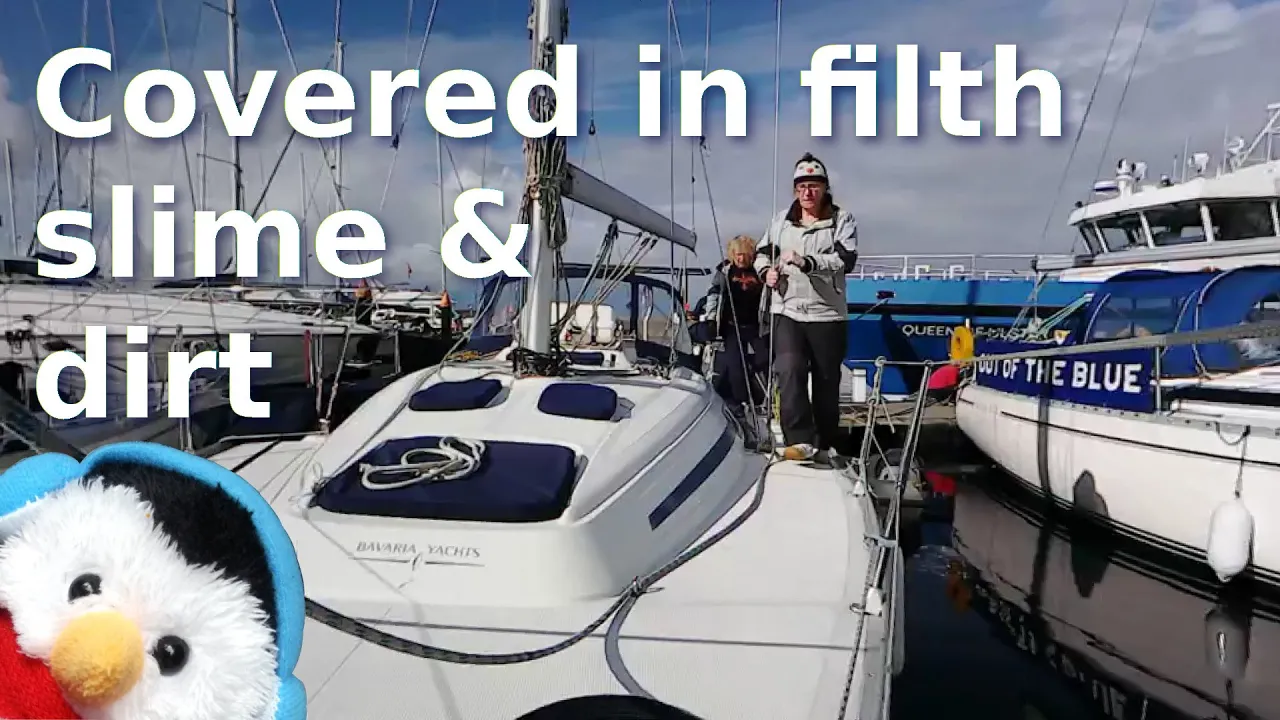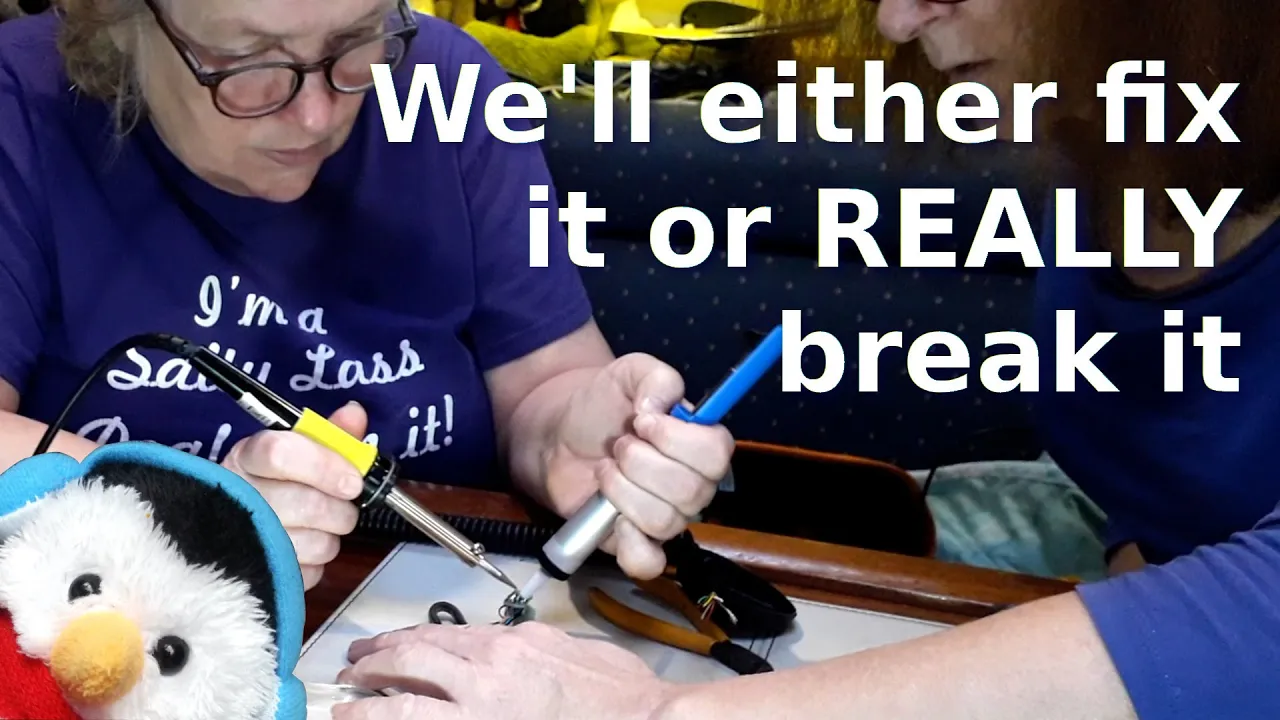Our sail projects continue, with me on the sail bag and Beverley on the Furlex. In addition to these projects, we were loaned a storm sail from our friend in Sailing North so that I could measure the tack and clew of the sail.
For various reasons, I have been thinking about storm sails and how we can be better prepared for storms when they come up. Knowing that the position of our third reef, makes our sail area just over 8m² which is the recommended area for Salty Lass, makes me feel better, so now I just needed to get my hands on a storm sail for the front so that I could measure the angles at the tack and the clew. Help came from our friend on Sailing North when he loaned me his storm sail. The purpose of the experiment worked in that there was enough room at the front of Salty Lass to use the spinnaker halyards to hoist a sail. Some alterations will be needed to Salty Lass in that we will need to add a hard point just behind the anchor locker. The position we would use is where you can add a staysail, however Salty Lass has a fractional rig so unless we want to add more standing rigging a stay sail is out of the question for us, so good news to me and the addition of a new hard point.
Servicing a Furlex
Equipment
- Lee cloth - This we wrapped around the front of the boat so that if we accidentally dropped something then it would stay within the confounds of the boat
- Box - We find this very useful for keeping all the tools and equipment together. We usually keep the box in the centre of the boat so that it is as far away from the side of the boat as possible
- Manual - This will be the second time we have serviced our Furlex, so you don't have to service it too often so having the manual to hand is useful
- Various tools - We needed a torques bit to unscrew our screws
- New furling line - This is not required but our furling line is over three years old so having a new line and a spare just seemed advisable to us
- White spirit - Used to clean all the mechanisms and remove old grease
- Loctite - helps to stop a screw from unscrewing
- Duralac - used on any dissimilar metals, like we had an aluminium plate and a stainless steel bolt so Duralac was needed here
- Seldon grease - Specialist grease needed to grease the mechanism
Method
- Take the mechanism apart. we heeded a torques bit for our screws, but having an array of tools available is useful in case you have a different screw
- Clean everything you can, for this we used white spirit, clothes and soap for the plastic sections
- Add new grease. Do make sure that you have the right grease for this
- Use loctite and Duralac where required
- One of the screws at the bottom is used as a locking mechanism so make sure you have screwed that in correctly
- In the Furlex system that are what are called nipples, you put the nozzle of the grease here and rotate the mechanism below it
The Sail bag continues
While Beverley was sorting out the furling mechanism, I was sorting out the sail bag, so I shared some hints and tips of what was in my sewing kit
- Webbing - Really strong and stops material fraying
- Micropore tape - I use this as a quick tape to stick down cloth, instead of pins. Its not a specialist tape so | can buy it anywhere. It does not leave a glue residue and I can use it on cloth and it rips so I can use it quickly
- Burner - Useful for burning threads. It melts webbing so that your webbing will not fray
Inspections
While you have the sail down it is always wise to insect your sail
- Stitching - Zigzag stitching always goes at the same point at the end of the zag, so you are looking for any stitches that have pulled away
- Around the bolt rope, this gets the most wear, so always look at this and see in there is any wear. We had slight wear, at the time I decided to leave it, but I've already decided to get it fixed. A stitch in time saves nine
- Halyard - Our halyard is a wire splice so I stocked the halyard to look for burrs and any bulges. A bulge donates an internal break, while a burr donates an external break. If I had detected either then the halyard would of been replaced.













